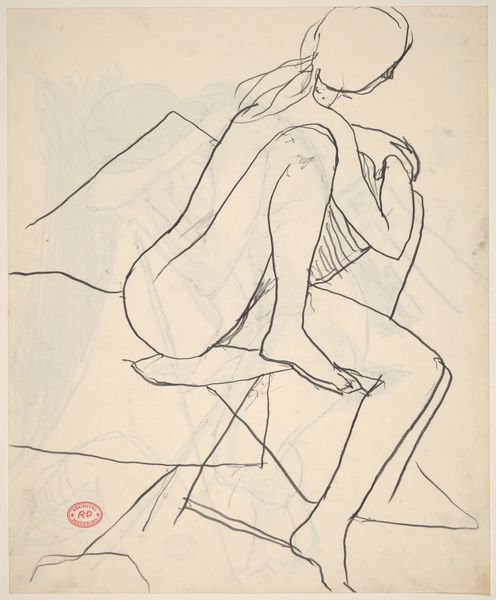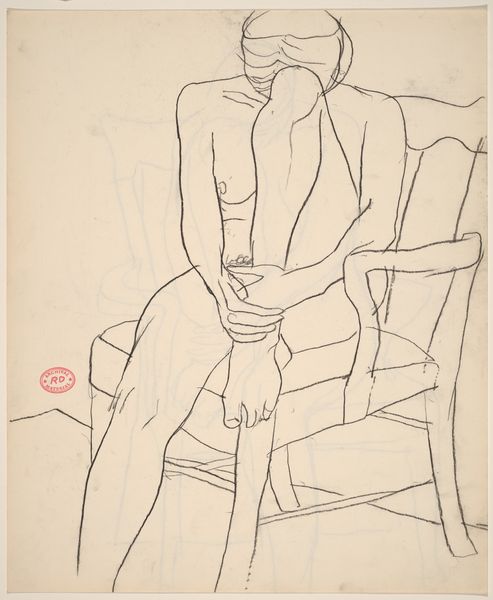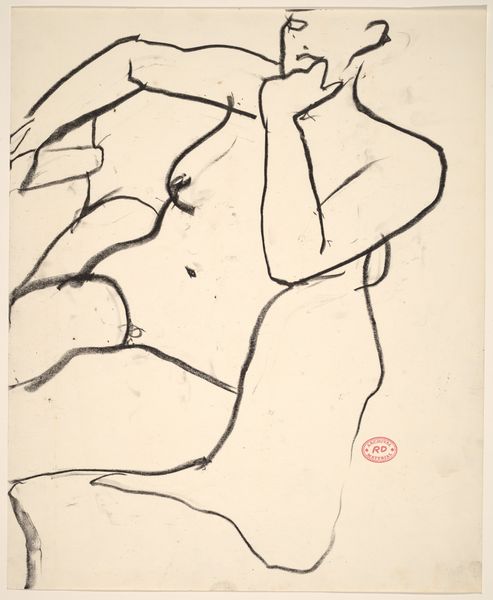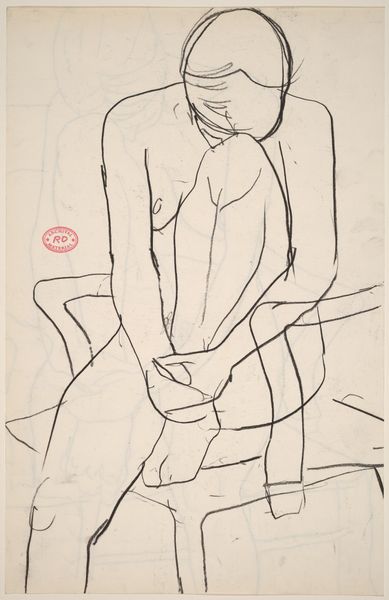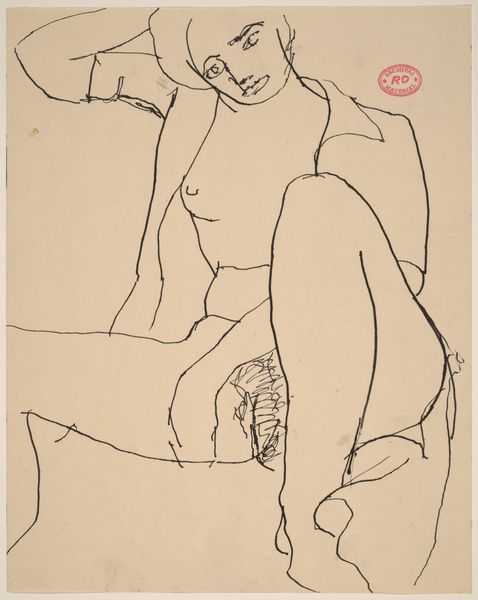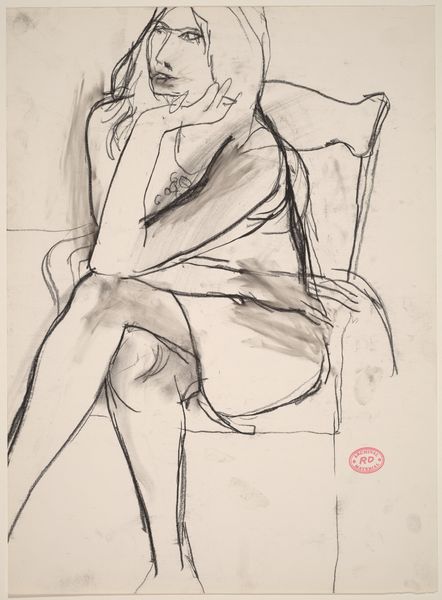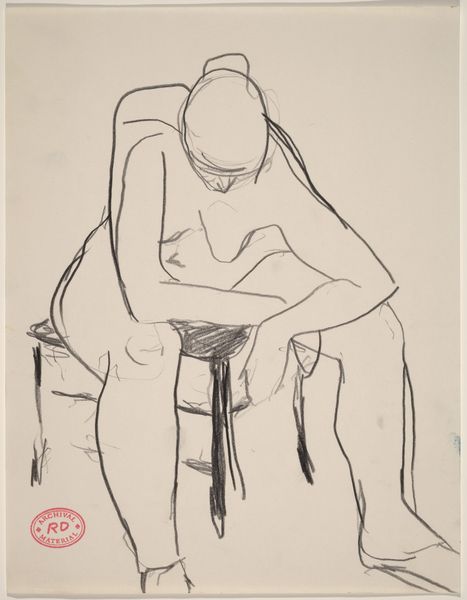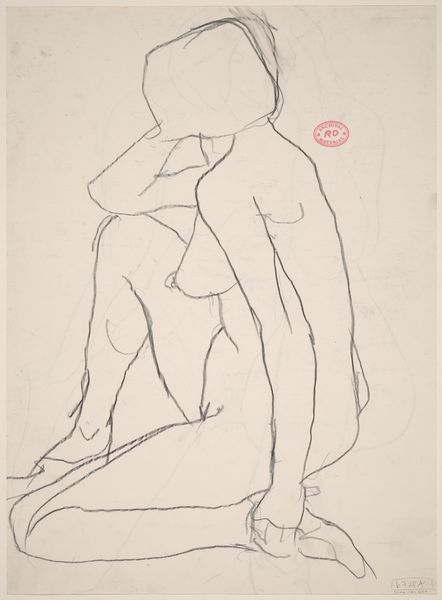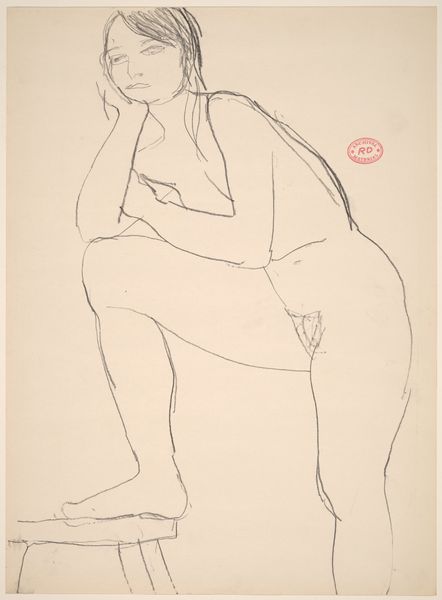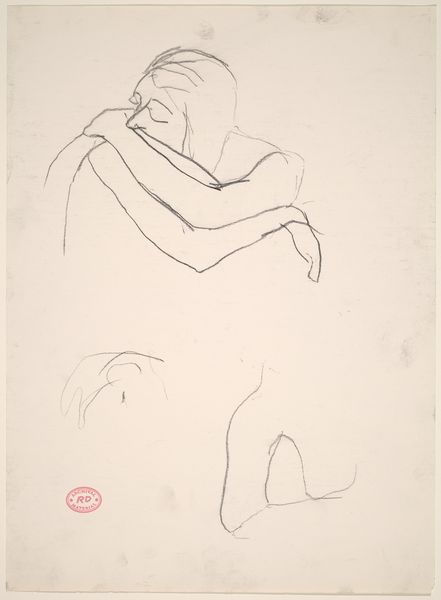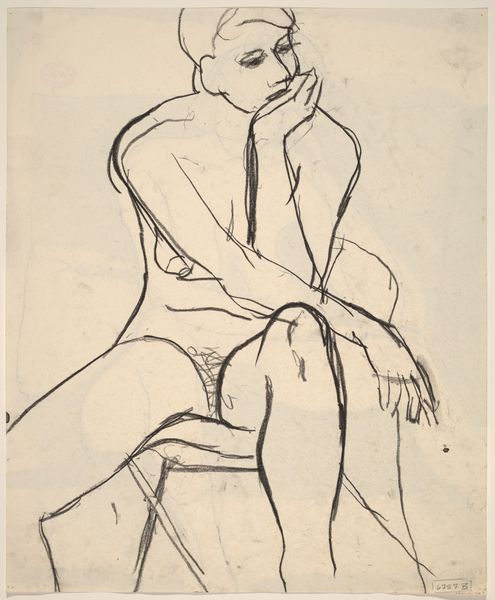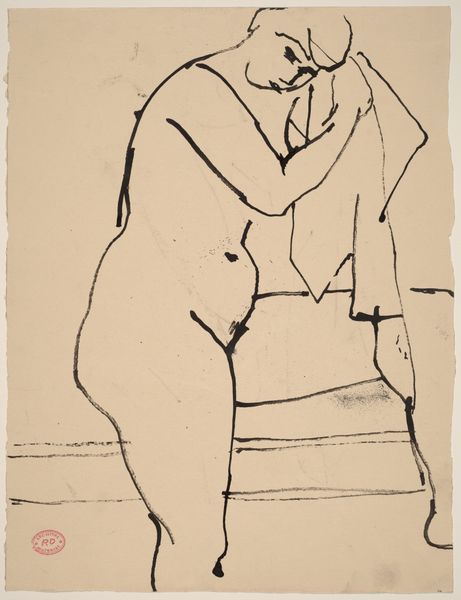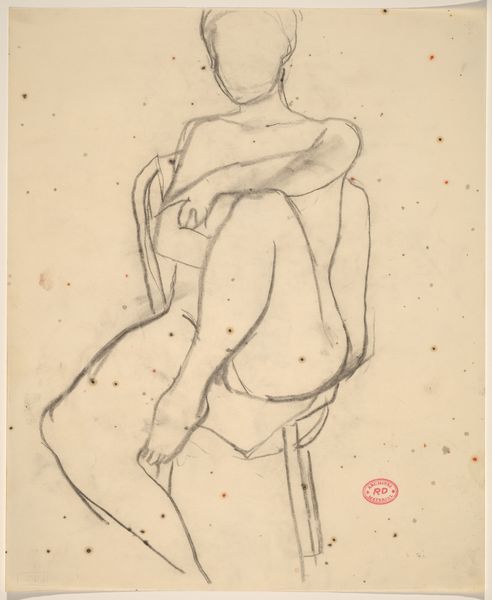![Untitled [seated nude with coat draped over her shoulders] by Richard Diebenkorn](/_next/image?url=https%3A%2F%2Fd2w8kbdekdi1gv.cloudfront.net%2FeyJidWNrZXQiOiAiYXJ0ZXJhLWltYWdlcy1idWNrZXQiLCAia2V5IjogImFydHdvcmtzLzVmMjhhM2M0LTg3NzItNGU2ZS04OWE4LTFhOGJjOWI5NWJlYi81ZjI4YTNjNC04NzcyLTRlNmUtODlhOC0xYThiYzliOTViZWJfZnVsbC5qcGciLCAiZWRpdHMiOiB7InJlc2l6ZSI6IHsid2lkdGgiOiAxOTIwLCAiaGVpZ2h0IjogMTkyMCwgImZpdCI6ICJpbnNpZGUifX19&w=3840&q=75)
Untitled [seated nude with coat draped over her shoulders] 1955 - 1967
0:00
0:00
drawing, ink
#
drawing
#
ink drawing
#
figuration
#
bay-area-figurative-movement
#
ink
#
line
#
nude
Dimensions: overall: 43.2 x 35.2 cm (17 x 13 7/8 in.)
Copyright: National Gallery of Art: CC0 1.0
Editor: Richard Diebenkorn’s "Untitled [seated nude with coat draped over her shoulders]," likely created between 1955 and 1967, is rendered in ink. It presents itself rather starkly. Curator: Yes, the economy of line is quite striking. The sparest means are employed to delineate the figure, imbuing it with a contemplative mood, wouldn't you say? The subject is a nude, seated, partially concealed by a coat. Editor: Immediately, what I notice is the contrast. The stark lines define not just form, but also the process. The labor involved is apparent, a deliberate act of paring back. Curator: It is about more than the immediate subject. The negative space takes on a structural role. Each line delineates form, yet also speaks to absence—a key structural element contributing to the figure's pose and state of mind. Editor: And consider the ink itself. This isn’t about illusionism or perfection. It's about direct, unmediated marks—almost like a map charting a journey through form and the material constraints of ink and paper. The lack of shading or color directs attention squarely to this materiality. Curator: Precisely. By forgoing traditional modelling, Diebenkorn emphasizes line as a pure signifier, a framework of its own construction. The figure is both revealed and concealed, provoking questions about representation and interpretation. Editor: Looking closer at the figure, the casual drape of the coat suggests an intimacy that's not voyeuristic. There’s something immediate in that portrayal, which comes across due to Diebenkorn’s clear and transparent process. It does away with notions of artistic genius and focuses on the art and the act of doing. Curator: I agree that this piece emphasizes process as an important means, a technique used in many academic institutions. And yet, it's clear that the work’s structural organization guides the viewer to ask, 'How do line and form collaborate to construct the observed?' A query as relevant to Diebenkorn’s time as it remains now. Editor: The beauty lies in this honesty, doesn’t it? There are no hidden layers, no pretense. We see the decisions, the hand, the labor—a beautiful tension in its simple form. Curator: Ultimately, this exploration shows the capacity of the artist's hand in shaping both perception and discourse around form, labor, and materiality.
Comments
No comments
Be the first to comment and join the conversation on the ultimate creative platform.
